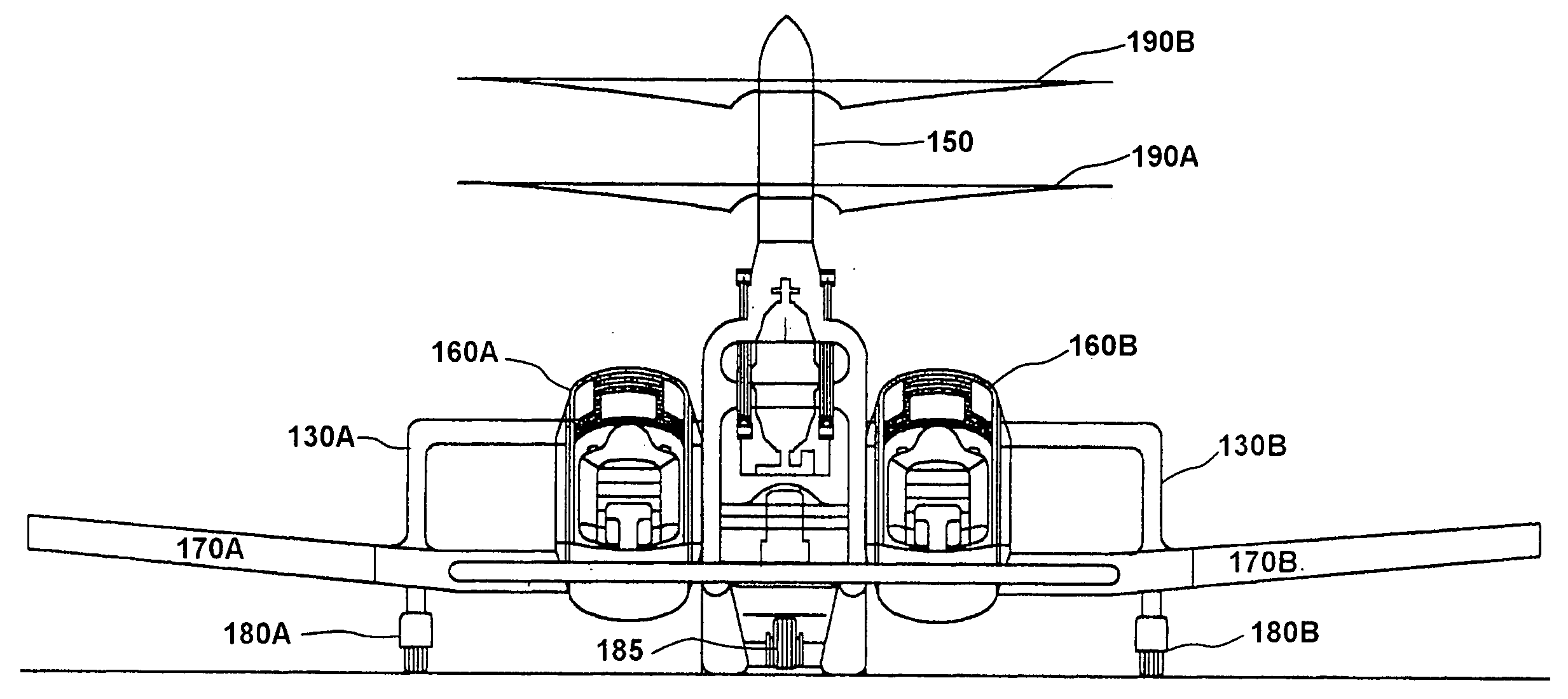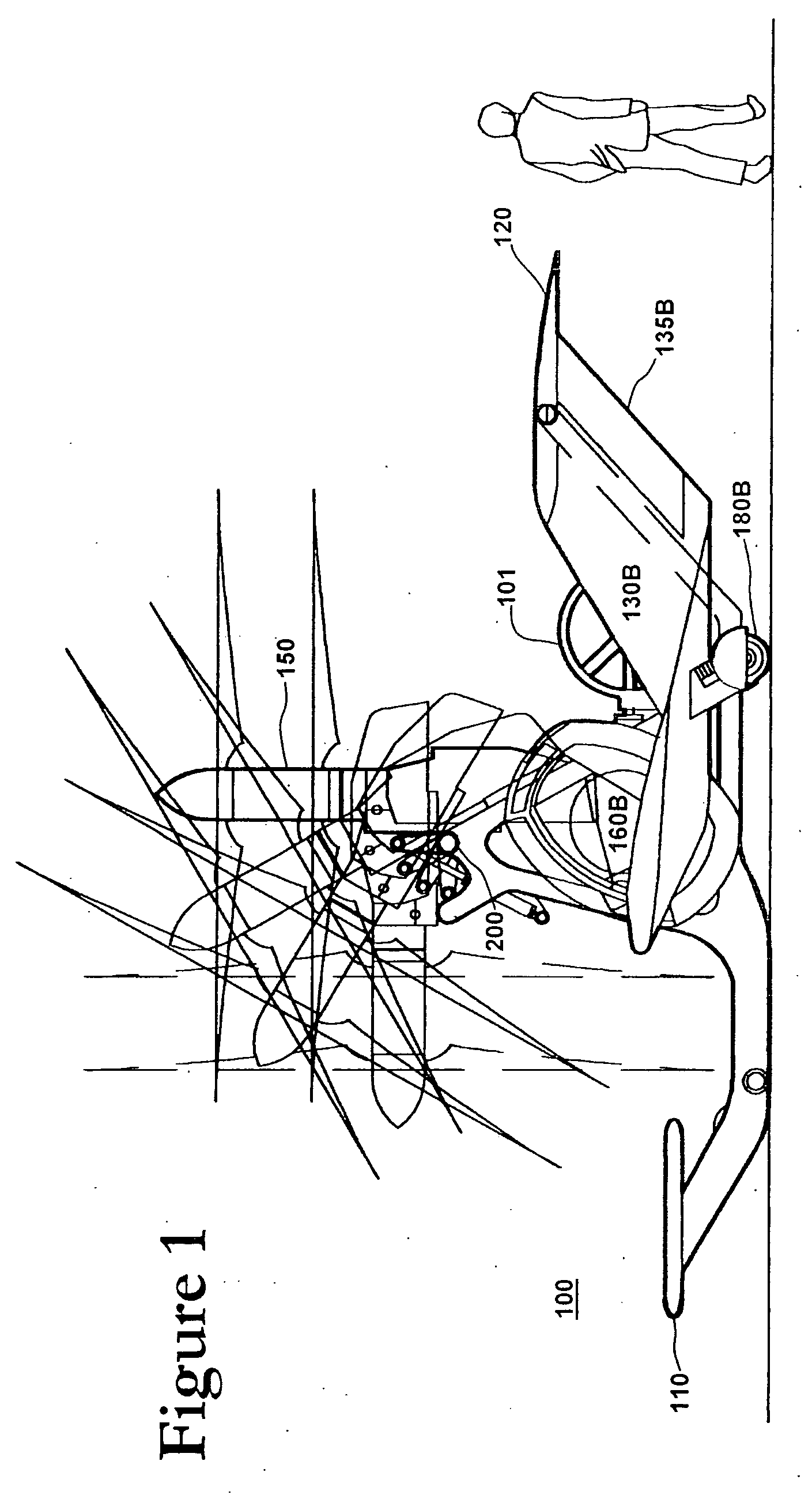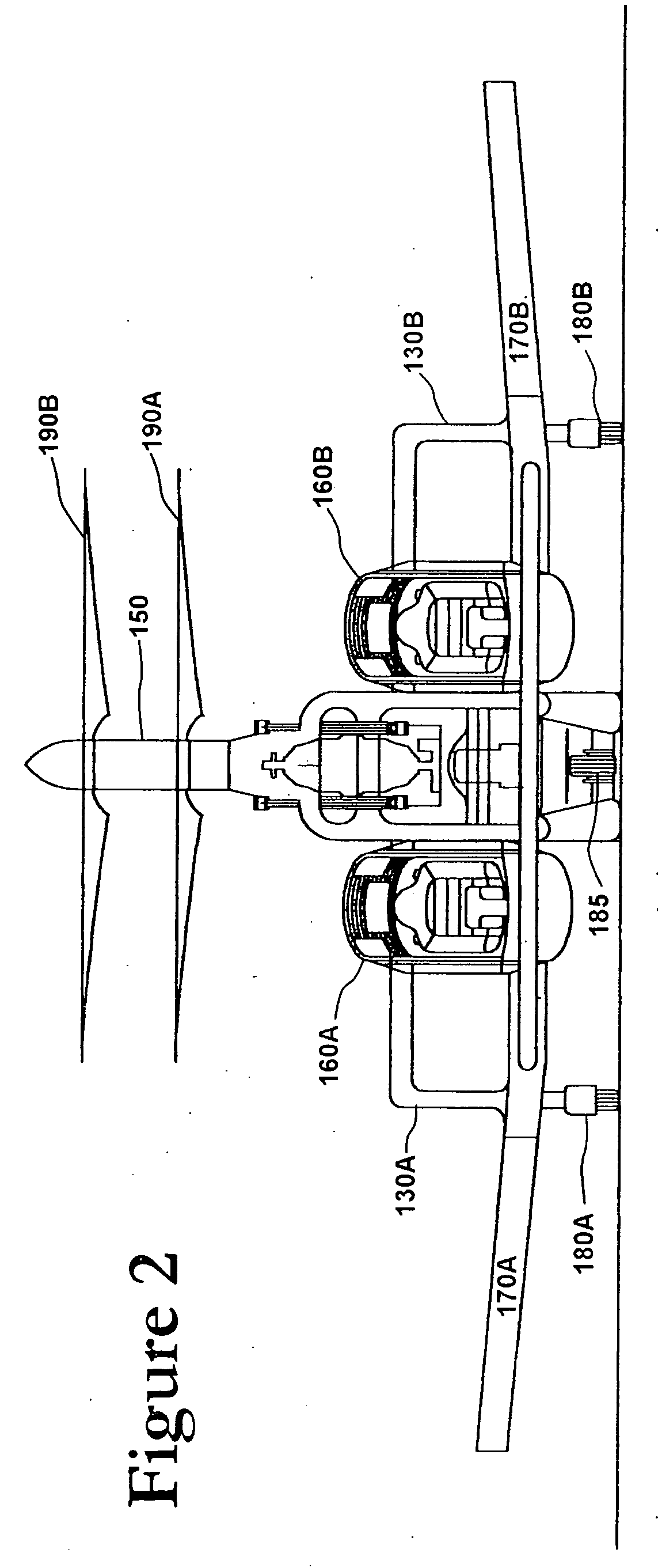Avia tilting-rotor convertiplane
- Summary
- Abstract
- Description
- Claims
- Application Information
AI Technical Summary
Benefits of technology
Problems solved by technology
Method used
Image
Examples
Embodiment Construction
[0024] The following list of design features are generalized for the purpose of describing the present invention to one of ordinary skill in the art. Like reference numerals are used to describe like components.
[0025]FIG. 1 is a side view of the craft 100 of the present invention illustrating the main components of the craft 100 and illustrating the travel of the tilt engine / rotor 150 from vertical to horizontal flight modes. FIG. 2 is a front view of the craft 100 of the present invention illustrating the main components of the craft 100 and illustrating the tilting engine / rotor 150 in the vertical flight mode. FIG. 3 is a top view of the craft 100 of the present invention illustrating the main components of the craft 100 and illustrating the tilting engine / rotor 150 in the vertical flight mode. FIG. 4 is a left side view of the craft 100 of the present invention illustrating the main components of the craft 100 and illustrating the tilting engine / rotor 150 in the vertical flight ...
PUM
 Login to View More
Login to View More Abstract
Description
Claims
Application Information
 Login to View More
Login to View More - R&D
- Intellectual Property
- Life Sciences
- Materials
- Tech Scout
- Unparalleled Data Quality
- Higher Quality Content
- 60% Fewer Hallucinations
Browse by: Latest US Patents, China's latest patents, Technical Efficacy Thesaurus, Application Domain, Technology Topic, Popular Technical Reports.
© 2025 PatSnap. All rights reserved.Legal|Privacy policy|Modern Slavery Act Transparency Statement|Sitemap|About US| Contact US: help@patsnap.com



